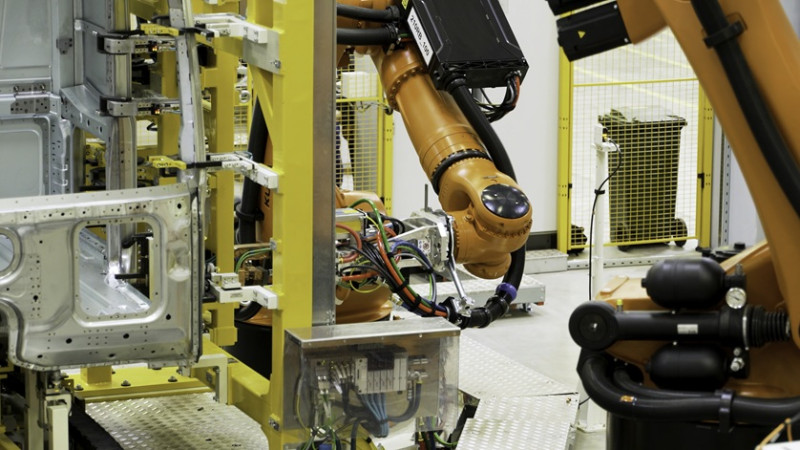
When it's time to replace parts in your car, especially if you're a DIY enthusiast or professional mechanic, you're faced with an important decision: should you go for the affordable part, or the cheap one? At first glance, it might seem like these are the same thing—but when you're under the bonnet or trying to save on long-term costs, the difference becomes crucial.
In the UK, where vehicle maintenance is a popular personal project and many tradespeople rely on their vehicles daily, understanding the distinction can mean the difference between a reliable fix and future headaches. In this article, we break down what "affordable" really means, how it contrasts with "cheap," and how to choose the right part for your vehicle and budget.
Understanding the Terms: Affordable vs Cheap
The words "affordable" and "cheap" are often used interchangeably, but in the context of car parts, they're worlds apart.
Affordable car parts offer a balance between price and quality. These are components that have been manufactured to a good standard, often by well-known aftermarket brands that rigorously test their products to ensure proper fit, performance, and durability. They're not the cheapest on the shelf—but they cost less than OEM (Original Equipment Manufacturer) parts while still offering comparable reliability.
Cheap car parts are usually the lowest-cost option available—and this low cost comes at a hidden price. These parts are often mass-produced with the cheapest materials possible, cutting corners on quality control and engineering standards. They might be okay for a temporary fix, but long-term use could lead to poor performance or costly repairs down the road.
It's the age-old phrase in action: "you get what you pay for." This is especially true in the automotive world, where durability and precision matter more than in many other DIY applications.
How Cheap Parts Could Cost You More
If you're on a tight budget, it can be tempting to snatch up the lowest-priced part online or at your local shop. However, what you save upfront may be negated by problems later on.
Cheap components tend to suffer from one or more of the following issues:
- Poor Fit – Many cheap parts aren’t made to precise vehicle specifications, which can make installation frustrating and affect vehicle safety.
- Low Durability – They often wear out faster, meaning you’ll likely be replacing them again soon—doubling your labour or paying a mechanic again.
- Performance Issues – Cheap parts, especially in critical systems like brakes, steering, or suspension, can impair your driving experience or even pose safety risks.
- No Warranty – These low-cost parts tend to have limited or no warranty support, leaving you stranded if something goes wrong.
Depending on the type of part, going cheap can also lead to other components being damaged, leading to a domino effect of expensive repairs. For instance, a poorly made timing belt can snap unexpectedly, damaging your engine and potentially turning a £40 savings into a £2,000 engine rebuild.
What Makes a Car Part 'Affordable'?
Affordable car parts typically come from reputable aftermarket manufacturers, who may not be OEM but still follow strict industry regulations such as ISO 9001 certifications. These parts are engineered with better precision and materials, offering performance close to original specs—but without the OEM price tag.
Often, affordable parts come with warranties ranging from 1 to 5 years, adding peace of mind and protection for your investment. Brands that focus on affordable quality tend to have detailed compatibility information and better customer support, helping both DIYers and professionals make the right purchase the first time.
Affordable parts might take a bit more time to track down compared to generic cheap alternatives, but when you consider their lifespan and performance, they usually prove to be the better value over time.
Price vs Value: A Practical Comparison
To help visualise the actual difference between cheap and affordable car parts, let’s consider a quick comparison using a few popular vehicle parts for an average family car in the UK, such as a Ford Focus:
| Part | Affordable Option (e.g., Quality Aftermarket) | Cheap Option (e.g., Generic Brand) |
|---|---|---|
| Brake Pads | £35 (with 2-year warranty) | £18 (no warranty) |
| Oil Filter | £9 (OEM-equivalent build) | £4 (no specs listed) |
| Headlight Bulb | £12 (long-life, branded) | £3 (high failure rate) |
| Alternator | £120 (3-year warranty, premium refurb.) | £65 (no warranty, unknown origin) |
As you can see, the cheap option might save you money initially, but the risk of pre-mature failure, lack of warranty, and poor performance can make the affordable option the smarter buy in the long run.
Who Needs Reliable Parts the Most?
This question isn't just for amateur repair hobbyists; it directly impacts:
- Professional Tradesmen whose daily income depends on vehicle reliability.
- Young professionals trying to maintain an older car without breaking the bank.
- Architects and designers working on location who need to ensure their vehicle is ready to go every morning.
- DIY home enthusiasts who love the challenge of fixing things themselves but want to avoid fixing the same thing twice.
In all cases, investing a bit more up front in reliable, affordable car parts makes more sense than buying cheap and risking your time and money for an uncertain outcome.
How to Spot a Quality, Affordable Car Part
Fortunately, spotting the difference between affordable and cheap has gotten easier in recent years, especially with trusted UK-based online automotive parts retailers and marketplaces.
When evaluating a car part, look for:
- Brand reputation – Stick with names known in the industry (e.g., Bosch, EBC Brakes, Blueprint).
- Certifications – ISO certificates, TÜV-approved markings, and other test standards suggest quality control.
- Customer reviews – Real user feedback often tells the true story about product longevity.
- Warranty length – A manufacturer who backs their parts with a decent warranty likely trusts their product.
- Compatibility tools – Use your reg number to check precise fitment—know before you buy.
Remember, the goal isn’t to overpay—just to avoid the false economy of buying something twice (or more) when a single quality part would have done the job right the first time.
Final Thoughts: Smart Spending Saves Time and Money
Choosing between affordable and cheap car parts may feel like splitting hairs—but it’s one of the most important decisions you’ll make when repairing or upgrading your car. For those living and working in the UK, where reliability and cost-efficiency are key, an affordable part that balances quality with price will almost always be the superior choice.
Whether you're a tradesperson keeping your van fleet on the road, a designer heading from site to site, or a DIYer working in the garage at weekends, the right parts make your life easier—and your repairs more reliable. So next time you’re shopping for car parts, think value, not just price.





